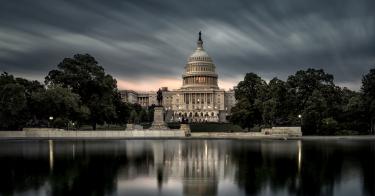There have been 21 government shutdowns since the first one in 1976. What if America never had to deal with another one?
Some lawmakers think they have a solution: “automatic continuing resolutions.” Auto-CRs could keep the government open even if Congress can’t pass spending bills.
In the aftermath of the longest shutdown in U.S. history, that probably sounds like a great idea. Auto-CRs would protect federal workers from policy battles and prevent stops in government services such as national park and museum closures.
But if Congress no longer had to pass annual funding bills to keep the government running, what would the long-term policy consequences be?
Auto-CRs could cause Congress to cede more of its power of the purse, for one thing. They could also increase spending, and make the appropriations process more dysfunctional.
Yet since the last shutdown ended, three separate bills have been introduced in the Senate to provide for an auto-CR as a means for Congress to punt on its budget obligations.
The concept of auto-CRs is not new. Prior to 1980, most federal functions continued to operate during a funding lapse. However, in 1980 and 1981, two opinions issued by the U.S. attorney general determined that agencies that continued to operate in absence of funding were violating the law.
Congress has attempted to pass several auto-CR mechanisms since the early 1980s, though only one short-term auto-CR for national defense was ever enacted.
There are some potential positives to having an auto-CR. But there are just as many downsides.
First of all, auto-CRs could cause Congress to relinquish more of its power of the purse. Over two-thirds of the federal budget is already made up of spending that is not subject to the annual appropriations process.
The remaining third of the budget is determined by Congress, though some control over that portion has already been given up to federal bureaucrats through unauthorized appropriations. Having an auto-CR in place would mean that, at least for some period of time, Congress gives up control over the last piece of spending it manages from year to year.
Second, auto-CRs could actually create more dysfunction in the spending process. Under current law, Congress is supposed to pass all spending bills individually and before Oct. 1 each year. That hasn’t happened in 25 years. Knowing that the government won’t shut down if bills aren’t passed could give Congress even less incentive to enact spending bills, prioritize resources, and provide oversight over how money is being spent.
The results could be bad news for taxpayers, because a third downside is increased spending. With an auto-CR in place, it could mean that Congress turns to uncapped emergency spending to boost funding outside of the normal appropriations process.
There is no clear definition of what “emergency” spending is, so Congress can appropriate emergency funding for any purposes deemed too important to wait until the next regular appropriations bill. To avoid spending caps, Congress could simply let an auto-CR go into effect and then pass an unlimited amount of emergency funding to supplement the continuing resolutions spending levels.
From FY 2013-2018 Congress authorized $255 billion in emergency spending for domestic programs. Much of that, however, didn’t go toward legitimate emergencies. In the absence of normal, full-year appropriations legislation, emergency spending could become a means for even more waste.
Instead of making it easier for Congress to pass on its budget obligations, Congress should make it harder to deviate from the rules it already has. There are numerous budget milestones set by law, but the enforcement mechanisms are weak and all but ignored.
If Congress was forced to stay in session when a milestone is missed, or if lawmakers’ pay or travel budgets were restricted, those penalties could motivate Congress to finally follow the law.
Auto-CRs could provide temporary relief from the perils of government shutdowns. But they aren’t a long-term solution. They won’t deliver a more transparent, accountable, and responsible budget process. On the contrary.
Instead of taking the easy way out and deferring spending battles, Congress should follow the law and enact budget and appropriations bills on time. That’s the best way to avoid another government shutdown.
This piece originally appeared in The Roanoke Times




